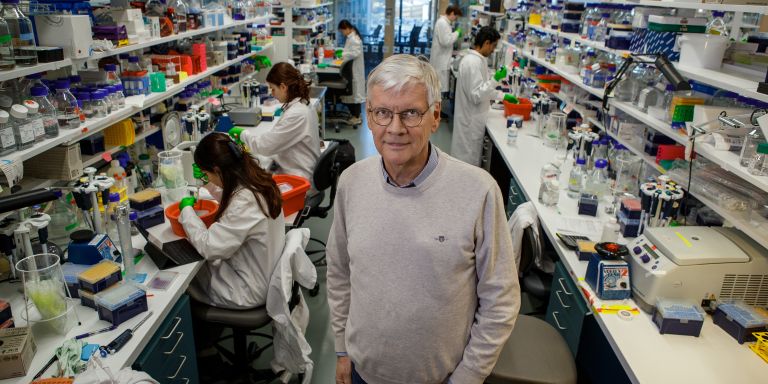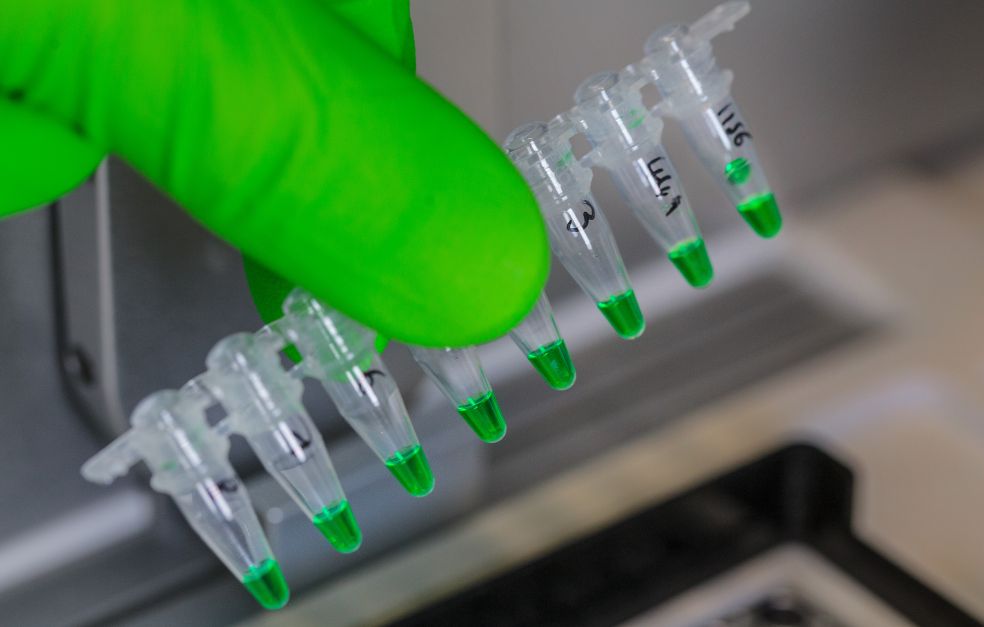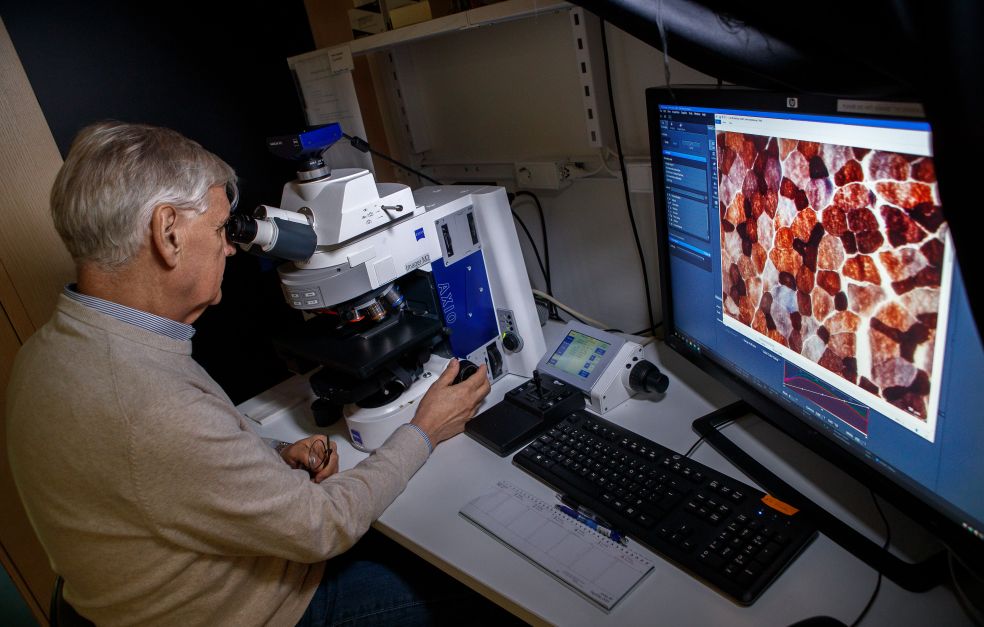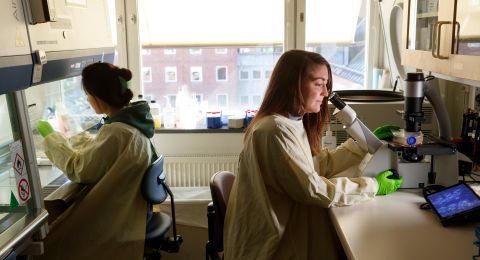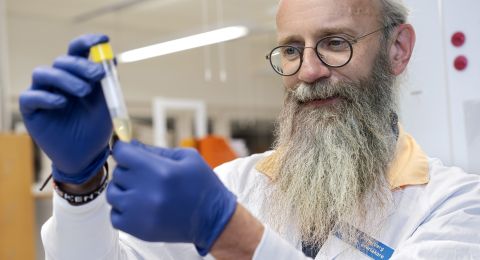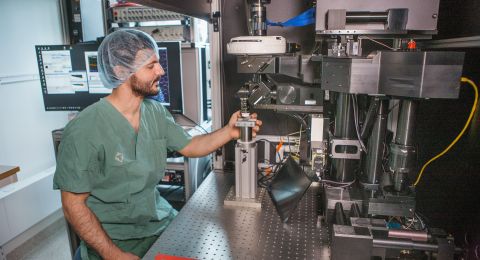Nils-Göran Larsson is a pioneer in the study of mitochondrial DNA (mtDNA), which is essential for the function of mitochondria – the powerhouses of the cells. Mutations of mtDNA cause mitochondrial diseases but are also found in ageing tissues. New findings may pave the way for future therapies.
Nils-Göran Larsson
Professor of Mitochondrial Genetics
Wallenberg Scholar
Institution:
Karolinska Institutet
Research field:
Mitochondrial regulation of physiological processes; mitochondrial diseases
Larsson’s interest in mitochondrial diseases dates back to the late 1980s when he worked as a pediatrician. He saw young patients with rare and often very severe diseases that related to defects in their mtDNA. He soon realized how little we really understood about mitochondria at that time.
“I wanted to delve deeper and learn more.”
In 1994 his quest for knowledge led him to Stanford University in the U.S., where he pursued a postdoc and learned mouse genetics and biochemical methods for studying mitochondrial function. There, he met Maria Falkenberg and Claes Gustafsson, two Swedish researchers with whom he has now collaborated for nearly 30 years.
Hereditary diseases
Mitochondria supply cells with energy, and have their own, small genome, i.e., mtDNA, that contains much fewer genes than the chromosomes in the cell nucleus. We inherit mtDNA exclusively from our mothers and it is present in thousands of copies in most of our cells.
Larsson has spent a great deal of time investigating how mtDNA is maintained and expressed in order to understand its role in disease. Mutations in mtDNA can cause a number of diseases. Some of them occur early in life, whereas others only affect adults.
Over the past few decades Larsson and his colleagues have shown how mtDNA mutations can impact physiological processes in various organs and tissues, such as the heart, muscle cells and insulin-producing beta cells in the pancreas.
Larsson’s team made an important discovery in 2004, publishing a study showing that mice with a high level of mutations in their mtDNA age much faster than normal. The discovery garnered widespread international attention and helped to confirm the link between decreased mitochondrial function and ageing.
“The study even made the front cover of Nature,” recalls Larsson.
Interplay between scientific research and clinical medicine
After a spell as the founding Director of the Max Planck Institute for Biology of Ageing in Cologne, Germany, Larsson returned to Sweden and Karolinska Institutet in 2015. Since then, he has put together a new research team with funding from his Wallenberg Scholar grant.
“The funding provided by Knut and Alice Wallenberg Foundation played a crucial role in my return to Sweden,” he says.
I still enjoy going to work every day. Research is exciting – you never know what’s going to happen and you learn something new every day.
We have gradually learned more about the impact of mitochondria on human health. The link to common diseases, including neurodegenerative diseases and type 2 diabetes have become more firmly established.
Knowledge about the fundamental principles governing how mtDNA is regulated and interacts with other cellular systems increases the prospects of being able to develop new, more effective therapies for these diseases.
“We’re acquiring more and more fundamental mechanistic insights, which also enable us to develop specific interventions. Theory and practice go hand in hand.”
New cancer therapies
There is also a link between mitochondria and cancer. Some years ago Larsson and his colleagues Maria Falkenberg and Claes Gustafsson identified a molecule that inhibits the expression of mitochondrial DNA. This has been found to inhibit the growth of tumors in mice – with few side-effects.
This is because the key role played by mitochondria in metabolism renders them necessary for cancer cells to provide the building blocks necessary for constant cell division. The link between mitochondria and cancer was confirmed in a recent study on lung cancer, where higher levels of mtDNA promote tumor growth in mouse models.
“These findings show that mitochondrial DNA may be a potential target for future cancer therapies,” says Larsson.
The link between mitochondria and metabolism is supported by another part of Larsson’s research line. New findings show that obesity in animal models can be countered by adjusting mitochondrial function.
To drive the research forward, Larsson, Falkenberg and Gustafsson have formed a company called Pretzel Therapeutics Inc., whose objective is to develop therapies for mitochondrial diseases.
Larsson stresses that he does not want to work in the pharmaceutical industry himself; he aims to continue his research, focusing on understanding the mechanisms underlying mtDNA and its regulation.
“I’m not interested in running companies – I’m happy to be an advisor. And it may well be that this collaboration is an excellent way to drive new potential therapies.”
Opening the “black box”
Although considerable progress has been made, much research remains to be done. It is true that we now know about numerous mitochondrial DNA mutations that cause disease, and diagnostics have become much better. But there are still only a few treatments available for patients with severe mitochondrial diseases. Yet Larsson is hopeful as he looks forward.
“I firmly believe that effective therapies for mitochondrial diseases will be developed over the next ten years.”
Mitochondria used to be “black boxes,” whose contents were largely a mystery, but many fundamental processes have now been mapped.
“Huge developments have taken place over the past 30 years. I and many other researchers have played a part in exploring mitochondria at molecular level, and our findings are now included in textbooks,” says Larsson.
Text Nils Johan Tjärnlund
Translation Maxwell Arding
Photo Magnus Bergström

